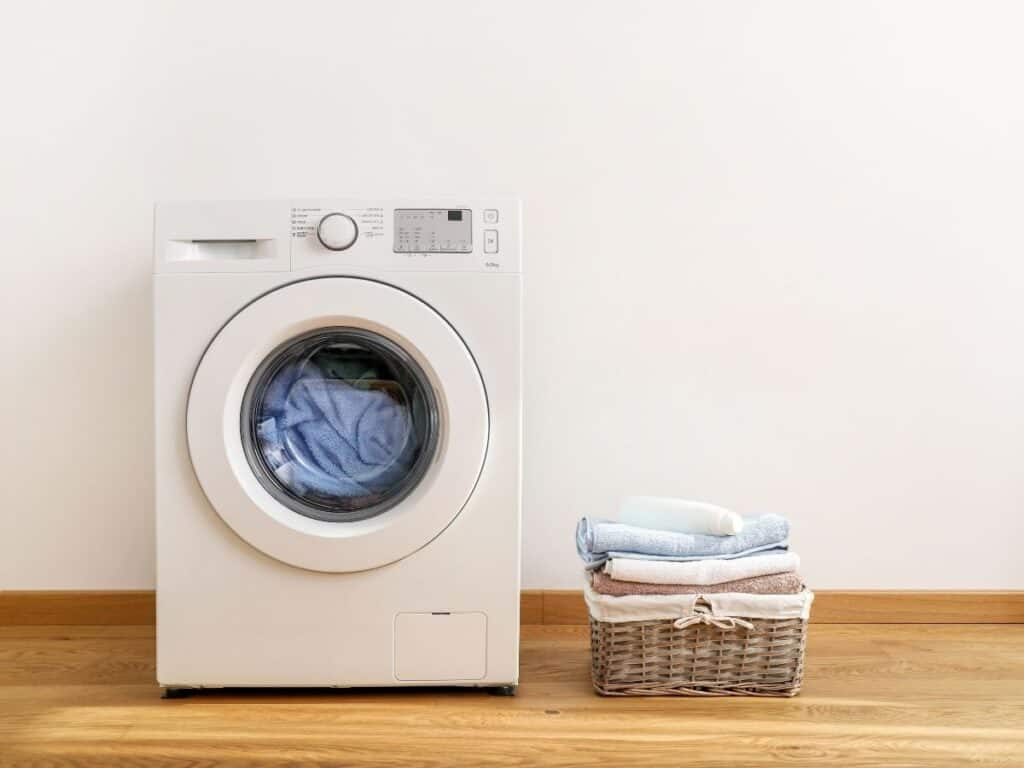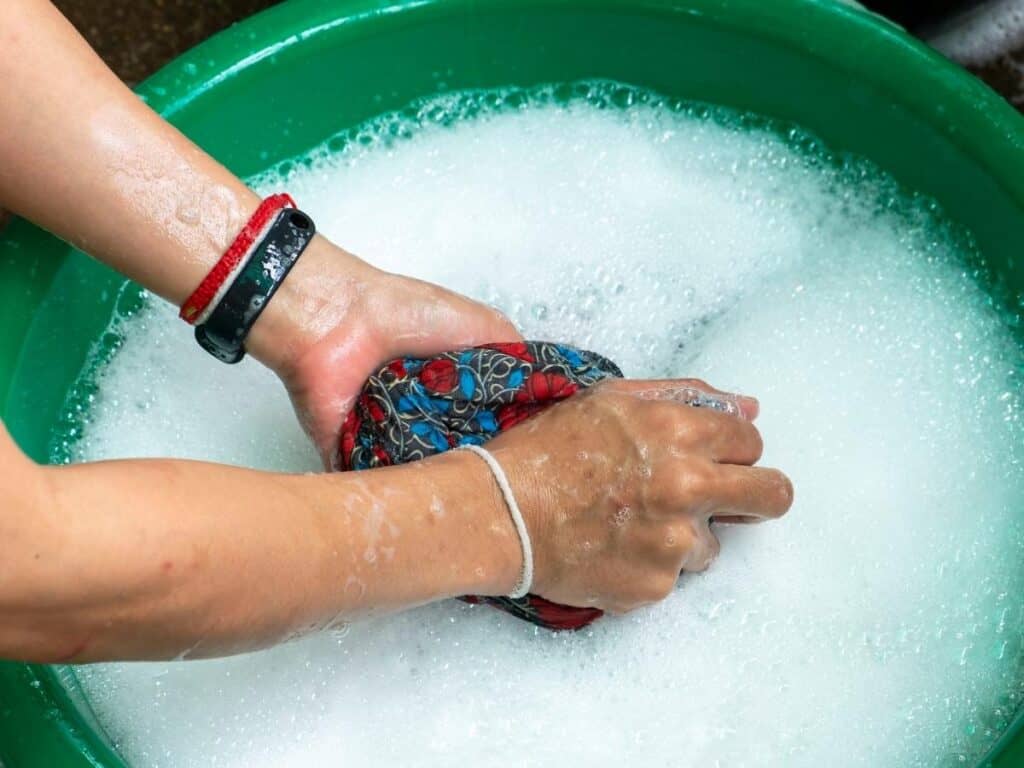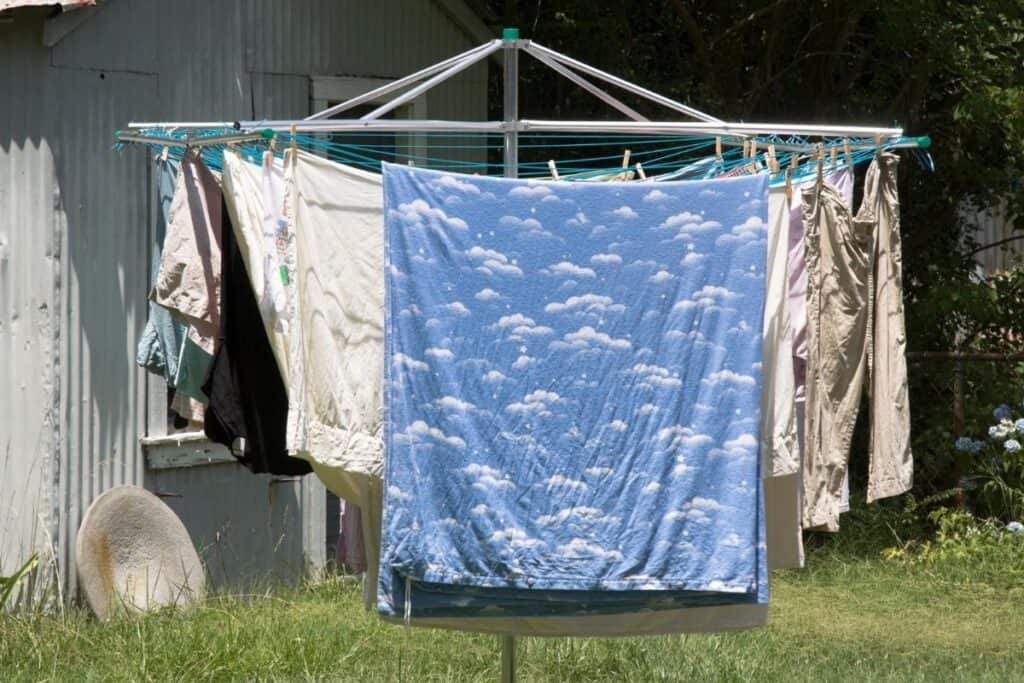Are your linens stained, and do you want to clean them? One of the most adored textiles in the world is linen. In addition to being used as upholstery and curtain fabric, linen is also used in clothes and bedding, making it a wise choice for its modern appearance and robust nature.
Washing linens is a simple process. Your fabric can be machine washed, hand washed, or dry cleaned, depending on how it is used. In order to get the most out of your fabric, it’s crucial to follow the cleaning instructions for the method you select in order to preserve the fabric’s quality.
Washing Methods
It is crucial to read the care recommendations on the label before washing linen clothing. Although the many techniques described below can be used to wash fine linens, the manufacturer may suggest a specific technique for that linen.
Method 1: Machine Washing Linen

- To prevent dying, keep your lights and darks apart. To wash them all at once, you should place comparable objects in the machine. To prevent clothes from damaging one another in the washing machine, separate them based on colors and fabrics.
Put your linens in a soft bag if they have beadwork or are very delicate. This mesh bag is designed to safeguard clothing in the washing machine. - Make use of a mild detergent that won’t damage your linens. Purchase a gentle detergent designed for infants and individuals with sensitive skin or one created specifically for washing linen. Strong-smelling or chemically aggressive detergents may be too potent. Never use bleach or fabric softener when washing linen because these harsh chemicals might damage your clothing.
White linens can be brightened using oxygenated bleach without damaging the cloth. Before washing any stained parts of your linen, soak them in a solution of cold water and detergent. - Use cold water and your washing machine’s delicate mode to wash your linens. To prevent shrinkage and to make your washer gentler, always wash your linens in cold water on the delicate cycle. Since every washing machine is unique, yours might refer to its delicate cycle by a different name. Pick one with a long soak time, a brief wash time, a rinse, and a brief spin time.
If you are unsure of what the labels on your cycle indicate, see the washer’s manual. - Remove your linen from the washer immediately to prevent wrinkles. As soon as your washer cycle is complete, wash your clothes and begin drying. If you leave your linens in the laundry too long, they will begin to wrinkle and crumple as they dry.
Your linens may begin to mildew and smell funky if you leave them in the washer for too long.
Method 2: Hand Washing Linen

- Use mild laundry detergent and cold water to fill a small tub or sink. When hand washing linens, always use cold water to reduce the likelihood of shrinkage. When your sink or tub is full of cold water, block the drain by adding a spoonful of mild, linen-friendly detergent. Before adding water, make sure your sink or tub is clean.
If you need to wash a large number of linens at once, you may either fill up your bathtub with water or wash each linen separately in a tiny tub or sink. - To wash the linen, swish it around in the water. Your linen could be damaged if you wring, stretch, or twist it. Given that linen is sensitive material, you need to be careful with it throughout the entire process. Wash your linen in this manner for approximately one minute or until you are satisfied that it is clean.
If you think your linen is very unclean and needs another round of detergent, you can repeat this process. - Afterwards, replace it with fresh, cold water. Drain the soapy water after washing your linen in the detergent-water mixture, and then fill your sink or bathtub with new, ice-cold water. Rinse all the detergent down the drain to ensure that the following round of cold water is fully free of soap.
- Swish around the linen until all the detergent has been removed from the linen. To completely remove the detergent from your clothes, you might need to repeat this step numerous times. Once more, never stretch or wring your linen since this could harm it. Instead, continue swishing your clothes in the detergent as you did before.
To completely remove the detergent from your linen, you might need to drain and replenish your water a couple of times. - Gently squeeze your linen to get the extra water out. After thoroughly removing all the detergent, carefully squeeze the linen to remove most of the water before beginning the drying process. Never squeeze the water out of clothing by wringing it or pressing it against the side of a sink or bathtub.
Method 3: Dry Cleaning Linens
Flax fiber is used to make linen. Because these natural fibers are more prone to wrinkling, dry cleaning is a great option.
While washing your linens is appropriate, having them dry cleaned can save you the time it takes to press the linens to get rid of any creases or wrinkles.
How To Dry Linen

Once the linen has been washed, you can dry it in the dry cleaner on low heat. This will assist in removing some wrinkles that are frequently seen on linen. The linens should be taken off, though, while they are still damp.
Air drying is necessary if the linen is used as upholstery on furniture or is very large such that it cannot be put inside a dryer.
Pressing Methods
Your linens can air dry as well, but you should be ready to press them to get rid of any creases.
Turn your iron to a low to medium heat setting and iron the linen fabric while it is still damp. Before ironing, you can alternatively dampen a towel and lay it over the piece of linen.
Other Linen Cleaning Techniques
While bleaching can be used to make a variety of clothes brighter, it is not advised for linens. Flax fibers may become weaker after bleaching. It also may discolor the fabric.
Attempting stain removal as soon as the linen cloth becomes discolored is essential. Apply a water and detergent solution to the stain and let it sit. Additionally, you can use a small amount of white vinegar, club soda, baking soda, or even spot-clean the cloth with these substances before blotting the stain with a towel.
Try rubbing the stain with dish soap to remove dirt if spot cleaning doesn’t work. Then, use one of the washing techniques described above or wash the fabric by hand.
Finally, the linen may maintain its new feel by routine care on your linens, especially in places with high activity, like furniture or carpets. Baking soda, common household linen, can get rid of scents by simply sprinkling some on the cloth, letting it sit, and then vacuuming the residue.
What you should consider before washing your linen clothes
Try pre-treating any stains or marks on your linen clothing before washing. Baking soda and white vinegar are fantastic at-home methods for removing stains, so dab them there right away. Check to see if the color stays fast on a hidden area first.
Before washing your linen apparel or other linen goods, we always advise you to read the care instructions on the label. This is why:
- With its excellent versatility for any wardrobe, linen blends well with other materials and works well with various dye colors. However, these hybrid materials can need special handling.
- When washing linen that has already been pre-washed, the fabric is less prone to shrink. However, utilizing the prescribed temperatures is still crucial since some linen can be machine-washed in warmer water while others need cold water.
- washing linen clothing
- Even though all dresses, tunics, trousers, and shirts are made of pure linen, additional fabrics used for the stitching, trim, or lining may need to be dry cleaned, or hand washed. That tip can damage your clothing if you disregard it or are unaware of it.
- Clothes made of less expensive linen could not wash as well as nicer linens. Your clothes will wash better and last longer if you purchase them from a reliable retailer that uses premium linen fabric.
- The fabric could be damaged or shrink if the washing recommendations are not followed. Before washing or ironing linen, read the label.
Next, you can check out my guide on how to make your bed smell good or my step-by-step guide on how to clean memory foam.
Frequently asked questions
Does linen shrink in the wash?
If the linen is not properly washed, it may shrink. You should read the garment’s label carefully and follow it at all times.
Choose a wash temperature under 40 degrees Celsius/104 degrees Fahrenheit. To avoid using a softener, use a natural detergent made for delicate fabrics. It is entirely unneeded because linen naturally gets softer with each wash.
Remember that linen can shrink by 3% to 10% after the first wash. Pre-washing linen clothing in cold water will help you avoid that unless the care instructions specifically state otherwise.
Be aware that linen fabric tends to shrink when exposed to hot water and high dryer heat.
Should I wash linen that its label says dry clean only?
You may rest easy knowing the answer to this intriguing question about all of your apparel that is labeled “Dry Clean Only.” Even if it says “Dry Clean Only” on the tag, it can still be washed. Professionals can use the dry cleaning process to clean them according to your preferences and budget.
It is best to “dry clean” the more structured, tailored items like linen coats or blazers.
Items with the label “dry clean only” can be hand washed or machine washed on a gentle cycle without causing severe problems.
The ideal option for you is dry cleaning; however, if you have the money but lack the time because it will spare you from having to spend a lot of time and effort trying to hang dry your garments, among other things.
Why do linen clothes shrink after washing?
Since linen clothes are made from fibers of the flax plant, once submerged in water, these organic plant fibers are prone to shrinking. Most businesses pre-wash linen to reduce shrinkage, but some don’t. Before cleaning, always check the care label on your linen and handle it with caution.
How do you unshrink linen clothing?
We have four easy steps for de-shrinking linen:
- Lukewarm water should have a mild soap added.
- Give your linen 30 minutes to soak.
- Carefully take the linen garments out of the soak. To squeeze out extra water, roll your clothing in a towel. Instead of being wet, your clothing should be damp.
- Carefully draw the fibers of your garment back to their normal, before-shrinking size by spreading it out on a clean, dry towel.
Allow your clothing to air dry before finishing.
How should you store linen garments?
Here is how to store linen clothing for the greatest possible care of this natural, fragile material. Avoid cardboard boxes, plastic bags, and cedar chests at all costs; instead, stay in cold, dry areas.
How do you clean linen napkins in the washing machine?
Always wash with the mildest detergent, the most water, and the lowest temperature possible. Since they will dry quickly in the air, never use bleach, and stay away from tumble drying.
Bottom Line
One of the most elegant and pure textiles in use today is linen. Even though it has a timeless aesthetic and is durable in usage, linen needs some level of routine care and cleaning to stay fresh.
One of the most resilient and simple-to-care-for materials available, linen is easily cleaned to preserve a place’s fresh atmosphere.

I’m an expert wardrobe organizer and a bit of a clean freak. I created this website and its YouTube channel to share practical guides about laundry and organizing. My teachings have been featured in multiple large news publications, and I’ve self-published two wardrobe organizing books and an entire course on the subject.

